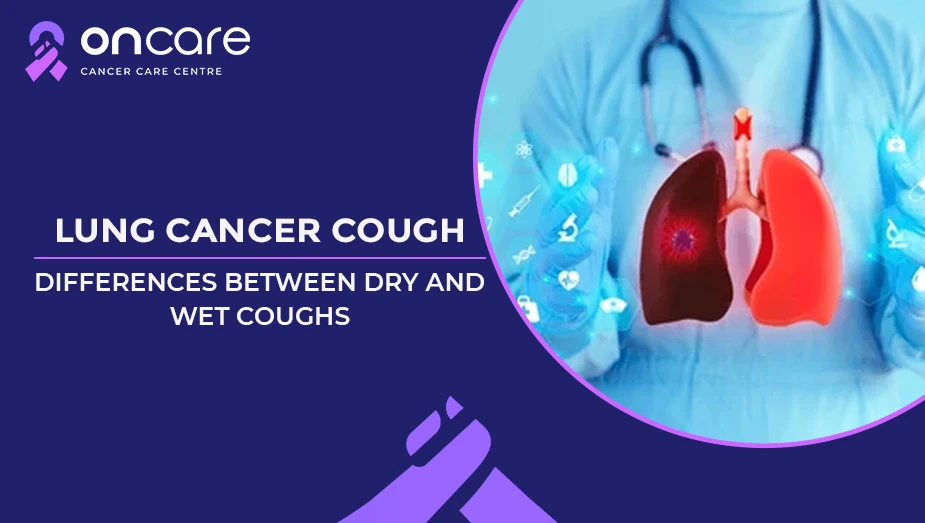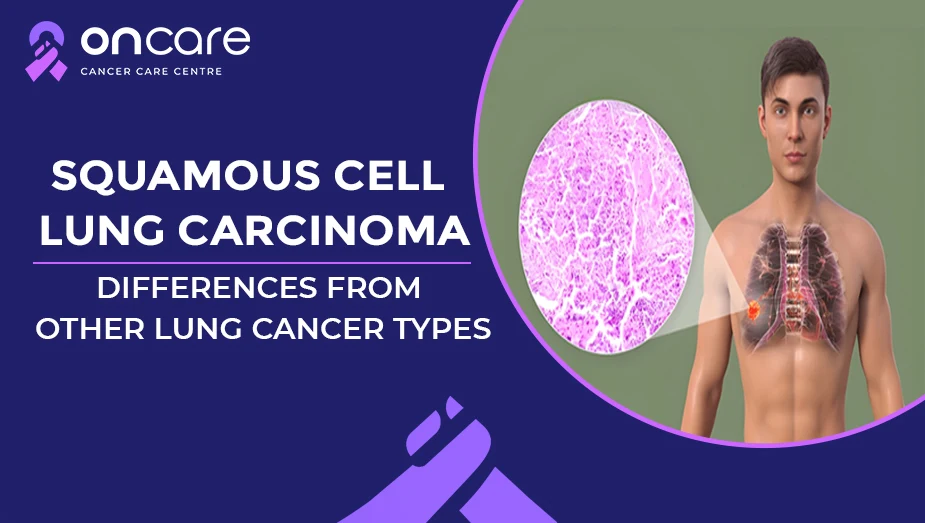Table of Contents
Lung Cancer Supportive Therapy: How It Improves Quality of Life

Lung cancer is a leading cause of cancer deaths across the world. The current advancements in treatments have improved the survival rates and treatment outcomes. These cancers will impact patients’ quality of life, which cannot be overstated. That’s where supportive therapies play a crucial role! Lung cancer supportive therapy, or palliative care, focuses on alleviating symptoms, managing side effects, and improving the side effects of treatments. Additionally, it improves the overall well-being of individuals living with lung cancer.
In this blog, we’ll discover more about how supportive therapy aims to enhance patients’ quality of life and how it differs from curative treatments!
What is supportive therapy?
Lung cancer supportive therapy covers a range of medical interventions, treatments and emotional support specifically designed to improve a patient’s comfort and quality of life. These therapies are used with some standard lung cancer treatments including surgery, chemotherapy, or radiation therapy or as part of the end care.
One of the main goals is to perform these therapies to manage symptoms effectively, and reduce the burdens of these cancer treatments, side effects and help patients to maintain and improve the quality of life.
Performing a supportive therapy helps to address both physical and emotional needs, including pain relief, manage symptoms like shortness of breath, nutritional support and provide mental health care.
Key areas of Supportive Therapy in Lung Cancer
Here are some of the key areas of supportive therapy used in these cancer treatments, including:
Pain management
Pain is a common symptom experienced by lung cancer patients, especially in the advanced stages. Effective pain management is a major goal. These symptoms depend on the severity, and some of the treatments might include medications such as opioids, non-steroidal anti-inflammatory drugs, and even nerve blocks. These types of therapies are specifically designed for individual needs to ensure more comfort while reducing the side effects.
Breathing support
A patient often experiences issues like breathing problems such as shortness of breath, wheezing, and cough, especially when the cancer has spread to other areas of the lungs and distant organs. There are several medical interventions, such as oxygen therapy, bronchodilators, or even palliative radiation therapy, to remove the blockages, which might help patients to breathe more easily.
Mental and emotional support
A cancer diagnosis is highly emotionally and mentally tiring, not just for the patient but also for the family. Many patients will experience the feelings of anxiety, depression, and fear as they start to cope with the realities of the disease. Additionally, they will provide psychological support through counselling, cancer support groups, and cognitive behavioural therapy, which can be incredibly helpful. These will help to promote a sense of hope and acceptance during their treatment journey.
Diet and Nutritional support
Cancer and its treatments can cause different types of nutritional challenges, including the loss of appetite, nausea, and difficulty in swallowing foods. A nutritionist specializing in oncology will help to design individual diet plans for patients. It helps to ensure that the patients get the nutrients to maintain strength and energy levels.
Managing the side effects of treatments
Treatments like chemotherapy, immunotherapy, and radiation therapy can often cause side effects such as nausea, vomiting, fatigue, hair loss, and major skin changes. Supportive therapies can manage the side effects effectively. In some patients, anti-nausea medications, fatigue management methods, and skincare processes help to reduce the physical toll of treatment.
Palliative Radiation therapy
Palliative radiation therapy is a non-curative treatment specifically designed to shrink tumors causing pain, bleeding, and other distressing symptoms. These treatments can provide significant pain relief in some cases. It also helps to reduce discomfort and improve patients' overall quality of life, without aiming to cure cancer itself.
End of life care
For patients in the advanced stages of lung cancer, these supportive therapies help to focus more on comfort and care. This later stage of care often involves more services, which provides a comprehensive approach to manage pain, symptoms, and emotional needs at the end of time. One of the main goals is to ensure that the patients live their final days as comfortably as possible, surrounded by their loved ones and family and friends.
How supportive therapy improves quality of life
The supportive therapy on cancer patients helps to improve the quality of life tremendously. These can go beyond managing the lung cancer symptoms and help patients to maintain a sense of normal life, as they can ease the challenges of cancer journey.
Here’s how lung cancer supportive care helps:
Physical comfort:
Patients with these cancers will experience pain and other physical symptoms that generally drain the patient’s energy; additionally, these will reduce the ability to engage in physical activities. By effectively managing these issues, patients can preserve more of their physical strength, allowing them to continue participating in more meaningful physical activities, such as spending more time with family and loved ones.
Emotional well-being:
Patients dealing with lung cancer can often feel emotionally overwhelmed. While psychological support will help patients to deal with the fear, uncertainty, and grief associated with the disease. Many experts suggest that when patients' emotional needs are met, then they are ready to face their illness with resilience and reduce the emotional and mental toll.
Enhanced relationships:
A lung cancer diagnosis affects not only the patient but also their family and friends. Getting supportive therapy can help families to understand complexities of caregiving, ensuring that they have the emotional and practical resources to offer care to the patients. It creates a more supportive environment and improves relationships and provides more comfort and care to everyone involved.
Independence and dignity:
Many lung cancer patients might worry about losing their independence during cancer treatments. Supportive therapies are designed to help patients to manage their health and symptoms as much as possible. With proper assistance, many patients can make more choices about their lifestyle and care, and it helps to preserve dignity and control.
The role of multidisciplinary Teams
An effective supportive therapy relies on a multidisciplinary team that includes a team of specialized oncologists and palliative care specialists, along with nurses, psychologists, and dietitians. While bringing together experts from different sectors, patients often receive comprehensive care that addresses different aspects of well-being.
This multidisciplinary team work united to create a more individualized plan which meets the patients unique needs, goals and preferences.
Consult Today
Lung cancer is a complex and life-threatening disease, but supportive therapy provides patients with extra care. These will enhance the quality of care and improve the lives of patients. These are used to manage the symptoms, offering emotional and psychological support and addressing some concerns, while these therapies empower patients to live more confidently and comfortably throughout their life journey.
At Oncare, we offer premium-quality cancer treatments, including advanced cancer surgeries at an affordable price range with an experienced cancer specialist consultation.
If you or any loved ones of yours are diagnosed with cancer, then visit Oncare Cancer Center and book an appointment with our experienced cancer specialist consultation today! Get an estimated cost of your cancer treatments today!
Frequently Asked Questions
Here are some of the symptoms of lung cancer, including:
- Trouble in breathing
- Cough that doesn’t go away
- Chest pain
- Discomfort
- Wheezing
- Coughing up blood
- Hoarseness
- Loss of appetite
- Unexplained weight loss
- Unexplained fatigue
- Shoulder pain
- Swelling in the face, neck, arms or upper arms
- Small pupil with dropping eyelids
Here are some of the risk factors for lung cancer, including:
- Being exposed to secondhand smoke
- Being exposed to toxic substances like radon, asbestos, uranium, diesel exhaust, silica, and coal products and toxins in the air.
- Having a previous radiation exposure or treatment to your chest
Here are some tests will be done to diagnose lung cancer, including:
- Blood tests
- Imaging
- Biopsy
- Molecular tests
Book an Appointment
Related Blogs

Lung Cancer Treatment in India: Cost, Hospitals, and Availability
Explore lung cancer treatment in India, including cost, top hospitals, and modern therapies like chemotherapy, targeted, and immunotherapy for better recovery.

Lung Cancer Cough: Differences Between Dry and Wet Coughs
Discover more about lung cancer cough and its differences between dry and wet coughs, and why lung cancer causes cough in patients, and when you should get concerned!

Papillary Adenocarcinoma in Thyroid, Lung, and Other Organs
Discover more about papillary adenocarcinoma in the thyroid and lung, its symptoms and diagnosis, prognosis and treatments, and papillary adenocarcinoma in other organs!

Squamous Cell Lung Carcinoma: Differences from Other Lung Cancer Types
Learn what makes squamous cell lung carcinoma different from other lung cancers. Understand symptoms, diagnosis, treatment options, and prognosis in simple terms.

